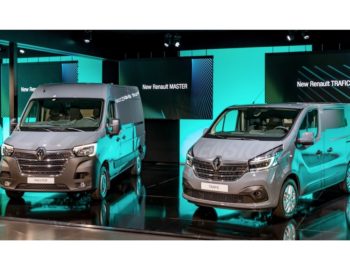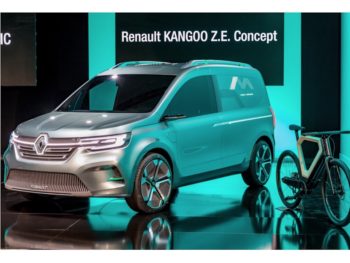Renault spearheads ambitious LCV growth plans with range renewal
Renault has taken the wraps off its heavily revised Master and Trafic and previewed the 2020 Kangoo as it plans for increased global LCV sales.
In line with its Drive The Future strategic plan for 2017-2022, the brand is looking to increase LCV sales by more than 40% by the end of the period, doubling its market coverage from 24% to more than 50%.
The plan also sets out a goal of becoming the first global player under the Renault-Nissan-Mitsubishi Alliance in LCVs with more than 2.5 million units sold. This includes its work with Brilliance to manufacture and sell light commercial vehicles in China.
Denis Le Vot, Alliance SVP, Renault-Nissan LCV Business Unit, said: “2018 was the best year ever for the light commercial vehicles business in terms of sales, with 34% growth compared to the previous year. In 2019, we will continue the renewal of our range to meet the expectations of our customers. Thanks to Renault Pro+ development and our connected services offer, we will keep on developing accurate and innovative solutions to support our professional clients’ business development.”
Revealed at an event in Paris today (23 April 2019), Renault’s renewed LCV line-up spearheads these plans by targeting market expectations of customer demand for increased design and quality, more technologies and comfort, as well as solutions equivalent to those of passenger cars.
The four-strong line-up includes the revamped Master, which goes on sale in September complete with a facelifted front-end, revised interior styling, new ADAS solutions and an updated engine line-up.
Offered in three heights and four lengths along with a variety of body types, the Master – which sold nearly 119,000 models globally last year – has been updated with a more dynamic front-end while the interior brings closer links with passenger cars and a focus on increased functionality.
It also debuts new ADAS features including a rear-view camera and front parking assistance, Side Wind Assist and Blind Spot Warning while Autonomous Emergency Braking (AEB), operating both in cities and on motorways, is now available as an option.
Engine range sees the 2.3-litre line-up now compliant with Euro 6d-TEMP / Euro VI standards (depending on the version) and benefiting from Twin Turbo technology, while providing increased power of up to 180hp while torque is up to 400Nm. Meanwhile fuel consumption is down by as much as 1l/100km. Units can be paired with either a six-speed manual gearbox or a six-speed automatic gearbox.
The interior and exterior changes are also being rolled out on the recently launched Master Z.E. electric van.
Renault has also revealed its revised third-gen Trafic, which gets a similarly updated front-end with Renault’s latest signature lighting, an updated interior with increased connectivity features and the option of a new polypropylene load area lining.
Engine line-up brings a range of 2.0-litre dCi engines compliant with Euro 6d-Temp standards and offering greater power from 120 to 170hp and increased torque up to 380Nm.
Latest driver assistance systems include front and rear parking sensors with rear parking camera and Trailer Swing Assist.
And Renault has also taken the wraps off its revised Alaskan pickup, which also arrives in Europe this autumn and gets new comfort and off-road abilities, together with increased payload, new suspensions and an improved braking system.
Renault has also revealed its Kangoo Z.E. Concept, which previews the 2020 Kangoo Z.E. and brings a more streamlined design in keeping with Renault’s passenger car design and features a wooden electric bicycle, developed in collaboration with France’s Keim Cycles. No details of the electric drivetrain have been revealed.
Renault AlaskanRenault Kangoo Z.E.Renault MasterRenault Trafic



